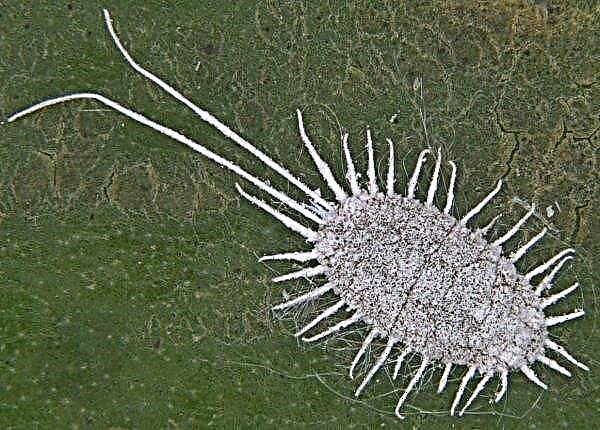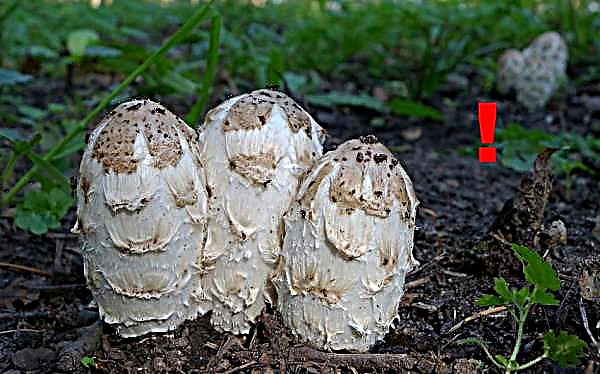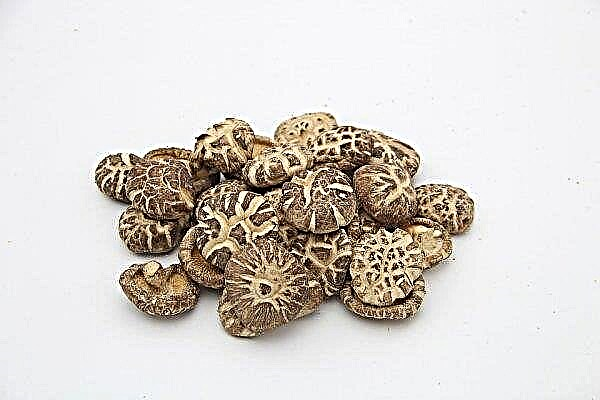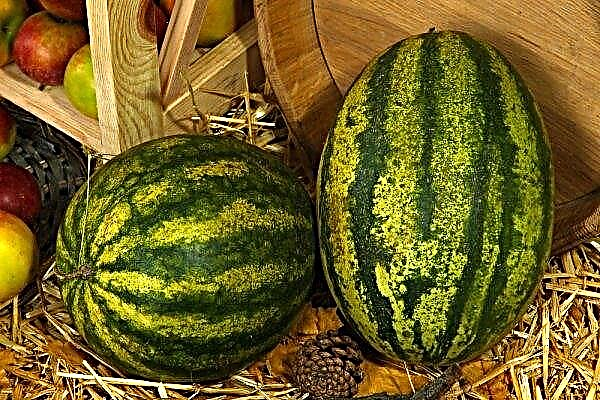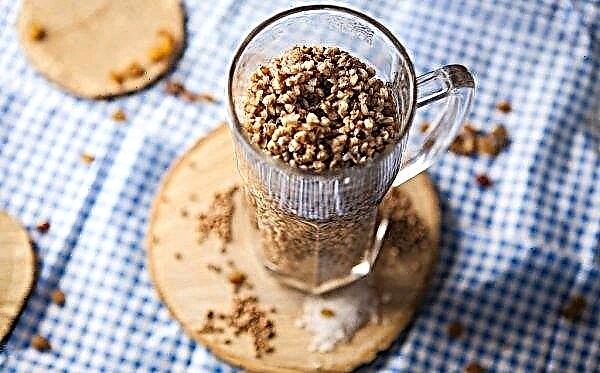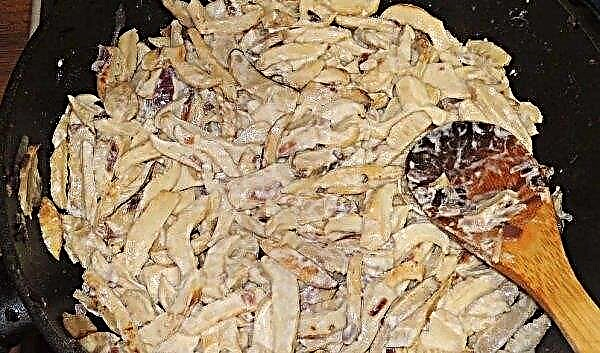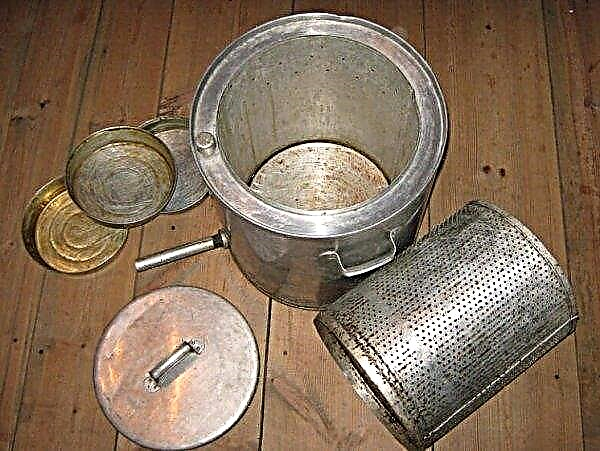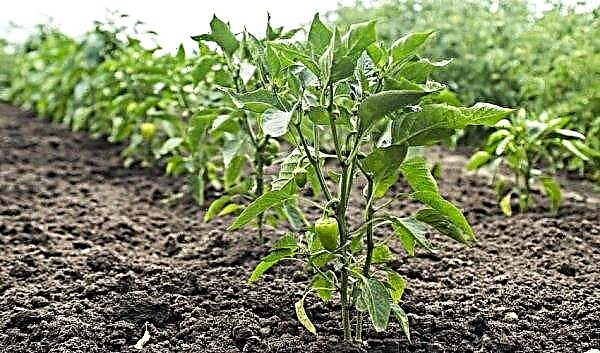Today, a wide variety of tomato varieties is puzzling even experienced gardeners who want to pick up quality tomatoes for growing. We recommend that you pay attention to the new, but already well-established variety F1 Doll, which will be discussed in the article.
Characterization and description of the variety
The creator of the F1 Doll variety is the Moscow-based Zedek breeding company. The hybrid was bred in 2004; it was added to the State Register of Varieties in 2006. On the basis of the variety obtained, Masha Doll and Dasha Doll were created, which are similar in appearance to fruits and plants, but differ in taste and ripening time. Doll F1 is designed for cultivation in open ground, but can successfully grow and bear fruit in greenhouse conditions.
The variety is determinant, that is, the central stem cannot grow higher than that genetically embedded in the seeds. The height of the bush does not exceed 80 cm. Growing to the indicated height, peduncles and brushes begin to develop to form an ovary. The bushes are compactly located, the shoots do not grow much to the sides.Did you know? Tomato has long been considered a poisonous plant, in Europe it was grown exclusively for decorative purposes. Eat the fruits of steel in 1822.
The leaves have a familiar shape for a tomato, medium size, saturated green. Sheet plates have a matte finish. The bush blooms with yellow buds collected in inflorescences. Each fruit brush can contain up to 6 tomatoes.
 Fruit ripening occurs on the 90th day after transplanting. The first crop can be harvested in July, the fruiting of the tomato is long and lasts until frost. Unripe fruits have a characteristic difference in the form of a dark green spot on the stalk. As they mature, the tomatoes acquire a uniform, rich scarlet color.
Fruit ripening occurs on the 90th day after transplanting. The first crop can be harvested in July, the fruiting of the tomato is long and lasts until frost. Unripe fruits have a characteristic difference in the form of a dark green spot on the stalk. As they mature, the tomatoes acquire a uniform, rich scarlet color.
The weight of one tomato can be from 70 to 200 g. According to the originator, the weight of tomatoes can be even more, this is affected by the amount of top dressing and the quality of care. All fruits have approximately the same size and weight, their shape is rounded with flattened poles on both sides. The taste of tomatoes is pleasant, sweet and sour, with a characteristic tomato aroma. Thanks to the dense skin of tomatoes, the crop is well and long stored, easily tolerates transportation. The output of marketable products is maximum and is 100%, that is, all the resulting fruits have an impeccable appearance and are suitable for sale.
Hybrid productivity is high - 260-400 kg / ha on an industrial scale, in the conditions of home cultivation, you can take 8 kg from 1 m².
Advantages and disadvantages
- Among the advantages of the F1 doll variety are:
- high yields;
- good taste and attractive appearance of the fruit;
- universality of the use of tomatoes;
- good transportability without loss of quality characteristics;
- strong seedlings and viability of young plants;
- resistance to common diseases;
- the possibility of growing in open ground and in greenhouses;
- ease of plant care due to the compactness and small size of the bushes.
- The disadvantages of the variety include:
- unsuitability of personally harvested seeds for reproduction and planting them next year, since they do not preserve maternal qualities;
- deterioration in the quality of fruiting due to untimely watering of plants;
- the need for garter bushes, as they tend to bend to the ground under the weight of the fruit.
Did you know? The largest tomato, according to the Guinness Book of Records, is a fruit grown in the United States (Wisconsin), whose weight was 2.9 kg.
Sowing time
Sowing of seeds of the variety is carried out in late March - early April, so that during the period of planting seedlings in open ground, it grows sufficiently and takes on a new place. Planting seedlings at a permanent place of growth is carried out after 40 days, if you plan to grow in greenhouse conditions, or after 60 days - if the seedlings will grow on an open bed.
Growing rules
In order to grow quality plants and get a good harvest, it is necessary to follow the rules of sowing and seedling care.
Growing seedlings
To obtain high-quality seedlings, observe the following sequence of actions:
- Sowing seeds for seedlings is carried out immediately after the purchase of seed material, they do not require pre-treatment, as they are hybrid and undergo all stimulating procedures before they go on sale.
- Large shallow containers are prepared for sowing. Soil marked "For vegetable crops" is purchased in a store or prepared independently: for this, 1 part of turfy soil, 1 part of chernozem, 1 part of humus or compost, 0.5 part of sand are mixed.
- Expanded clay is poured at the bottom of the tank so that excess water after irrigation leaves on time. Such measures are necessary to avoid possible rotting of the root system and the development of fungal root diseases.
- A layer of soil is poured on top of expanded clay, and shallow furrows (1 cm) are made with a thin stick. In the furrows place tomato seeds at a distance of 3 cm from each other. Fall asleep with the rest of the soil and irrigate with water at room temperature from the spray gun.
- The containers are covered with a plastic film in order to maintain the necessary humidity inside and create a “greenhouse effect” that will stimulate the germination of seeds. Regularly air the crops by removing the film for 1 hour.
- Crops are set on a well-lit, warm (with a temperature of at least + 25 ° C) window sill, sprayed once every 2 days.
Video: Sowing tomato seeds for seedlings
Care after seed germination:
- When the first shoots appear, the film is finally removed.
- The air temperature in the room is lowered to + 19 ° C during the day and + 15 ° C at night to avoid stretching and thinning of the main stem of the plant.
- Watering after germination can be done under the root using high-quality, well-maintained water at room temperature. Watering is necessary as the top layer of the soil dries up, tentatively, once every 3-4 days.
- A prerequisite for obtaining strong healthy seedlings is the implementation of a pick. The procedure is carried out already planted when it has at least 2 true leaves. The pick is to free the root system from the earthen coma and remove part of the central root. Picking is carried out manually with fingers, while the root is pinched out by 0.5–1 cm. The picking stimulates the growth of lateral roots, due to which a strong root system is formed, the stem thickens, seedlings grow stronger.
- Dive plants are planted in separate containers, preferably peat glasses, which can be planted in open ground without injuring the root system of seedlings. The soil is used in the same composition as for sowing seeds. After planting, the seedlings are well watered under the root and set in a sunny place.
- Subsequent care is continued until the plants are planted in open ground. A week before the transplant, seedlings begin to temper, taking them out for 1 hour, gradually increasing the amount of time.

Landing site preparation
The territory for planting seedlings is chosen well-lit, and ventilated, without drafts. Light nutrient soil with a neutral reaction is well suited for growing tomatoes. For planting, choose a place where cucumbers, garlic, cabbage, onions previously grew.
Soil preparation consists in pre-digging the site, removing weeds, loosening the soil. It will be useful to introduce rotted manure or compost to enrich the soil with the nutrients that tomatoes need to form an ovary and produce a large crop. For 1 m², it is enough to add 5-7 kg of organics.Important! You can’t plant on the place where potatoes and eggplants used to grow, as the risk of infection of seedlings with diseases and pests, on which solanaceous crops suffered the previous year, increases.

Technology for planting seedlings in open ground
Planting tomato seedlings is as follows:
- Wells are prepared, their depth should correspond to the length of the root system of seedlings. The width between the holes is at least 70 cm.
- 0.5 l of water is poured into the prepared well, mixed with soil. Plants are planted in wells and fixed with moist soil, then sprinkled with the remainder of the soil.
- The soil is slightly tamped to fix the seedlings well.
- Overgrown seedlings are planted at a slight angle (45 °) to the soil, for this purpose the plant is specially installed in the holes “crookedly”. Over time, the root system of plants deepens, and the bush is leveled.
Care Features
The quality of the fruits and the yield of the bush directly depend on the conditions of cultivation and care that the gardener was able to organize, so we will consider the rules of irrigation, fertilizer and other techniques that are mandatory.
Watering and fertilizer rates
Watering tomatoes must be done in the morning or evening, so that the roots have time to be saturated with water before the onset of heat. It is better to use water for irrigation at room temperature. It is recommended to water the bushes under the root so that the drops do not fall on the leaves and stems. The frequency of watering depends on the amount of rainfall. If the rains are regular and plentiful, then you can water the tomatoes once a week, if there is no rain, watering should be done once every 2-3 days, as the top layer of the soil dries. For the entire period of growth and fruiting, tomatoes are fertilized 3 times:
For the entire period of growth and fruiting, tomatoes are fertilized 3 times:
- 2 weeks after planting, a solution is added: 25 g of superphosphate, 20 g of potassium sulfate, 8 g of ammonium nitrate per 10 l of water.
- During the formation of the ovary, a solution is added based on 10 l of water, 20 g of ammonium nitrate, 25 g of potassium sulfate.
- After a month after the second feeding, make the same composition of the nutrient mixture.
Important! Fertilizing is necessary after preliminary watering the soil so as not to burn the roots, in an amount of 1 liter under the bush.
Pasynkovka and formation of a bush
The formation of tomatoes Doll F1 is recommended to be carried out in 1 or 2 stems, which allows all the tomatoes that are tied to these stems to ripen. The formation of a bush in one stem is carried out as the stepsons grow on the main stem, they should be removed in a timely manner, avoiding overgrowing. Additional stepchildren consume a large amount of nutrients as they grow, which could be used to form quality fruit ovaries. It is necessary to tear off the stepson, leaving a small "stump" to prevent the growth of new stepsons and protect the main stem from the formation of an open wound. A bush is formed in two stems, when the first fruit brush appeared, then under it in the axil of the leaf you can leave 1 stepson, which will develop and will soon give an additional ovary.
A bush is formed in two stems, when the first fruit brush appeared, then under it in the axil of the leaf you can leave 1 stepson, which will develop and will soon give an additional ovary.
Soil cultivation and weeding
So that regular watering does not provoke a decrease in the breathability of the soil, after irrigation it is necessary to thoroughly loosen the area. For loosening, use short forks, which are driven into the soil carefully so as not to damage the root system of the tomato. Sometimes loosening is combined with weeding and removal of weeds. Weeds must be torn out in a timely manner so that they do not interfere with the normal growth of tomatoes and do not deplete the soil. Larger ones are better to be pulled out manually to remove a long root;
Diseases and pests
Tomato Doll F1 is considered resistant to most common diseases, but it can get sick:
- Late blight - a fungal disease that manifests itself in the form of dark spots on leaf blades and stems of the bush, when infected during the formation of the ovary or fruiting, the tomatoes become covered with brown spots. As soon as the first signs of the disease are detected, the affected bushes are treated with Fitosporin or Bactofit, according to the instructions. Prevention of the development of the disease is considered to be crop rotation, destruction of plant debris on the site, compliance with watering recommendations.
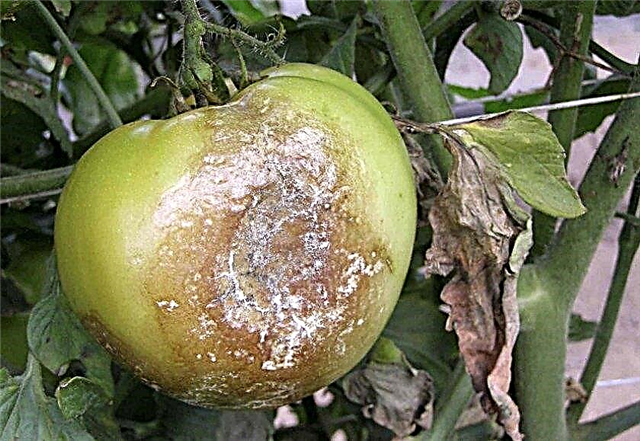
- Mosaic - a viral disease that affects the deciduous part of the plant, the plates become covered with yellow spots and curl up into a tube. For treatment use the drug "Karbofos", according to the instructions. For the prevention of the development of the disease, presowing treatment of seeds with potassium permanganate is considered effective (4 crystals of the drug per 200 ml of water, soak the seeds in solution for 1 hour).

- Whitefly - small insects with white wings that feed on the sap of plants, provoke their yellowing and wilting. Pest control is carried out with Confidor, according to the instructions. Prevention should be aimed at the timely destruction of plant debris on the site, compliance with the planting scheme.

- Medvedka - a large brown insect that lives in the soil, which can destroy the root system. To destroy the pest use the drug "Thunder", according to the instructions. Prevention of damage to the bushes by the bear bear consists in frequent digging of the site before planting, pre-planting treatment of the plant roots with Aktara.
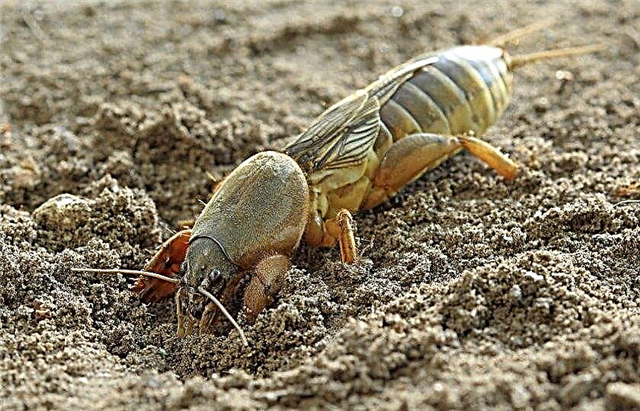
- Gnawing scoop - caterpillars of nocturnal butterflies that eat petioles and leaves of a plant. To combat the pest, the drug “Strela” is used, before disembarkation, and also every autumn, prophylaxis is carried out in the form of a deep digging of the site.

Harvesting and storage
Fruiting and the first harvest occur in early July, ripening occurs gradually, so you need to take fruits from the bushes regularly, visiting the garden every day. It is better to pick tomatoes with a stalk for longer storage. Doll F1 tomatoes are stored very well due to their strong peel and fruit density. It is better to keep the harvest in a cool place - a cellar or a refrigerator. You can extend the shelf life of tomatoes if you put them in a wooden box in layers, pouring each layer with sawdust.
Tomato Doll F1 is a good variety for home growing, as it has an excellent appearance and good taste characteristics. In addition, the process of planting and caring for plants is quite simple if you follow the recommendations that are described in detail in the article.






